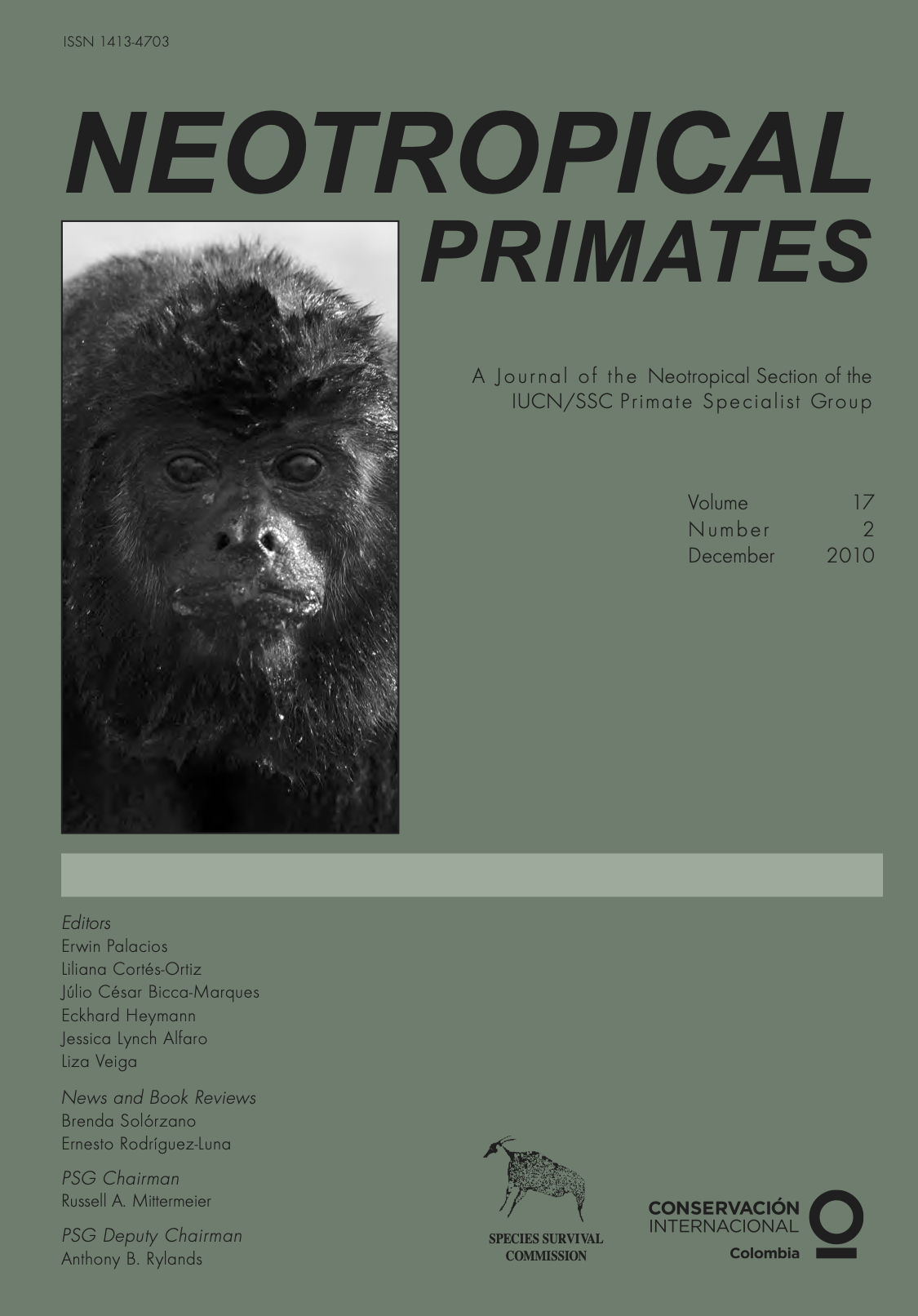Seed dispersal patterns in two closely related howler monkey species (Alouatta palliata and A. pigra): a preliminary report of differences in fruit consumption, traveling behavior, and associated dung beetle assemblages
DOI:
https://doi.org/10.1896/044.017.0203Keywords:
howler monkeys, seed dispersal, A. palliata, A. pigra, dung beetles, MexicoAbstract
Two-phased seed dispersal by primates and dung beetles is crucial for tropical rainforest regeneration. Two species of howler monkey exist in the tropical rainforests of southern Mexico: the mantled howler monkey (Alouatta palliata), and the black howler monkey (A. pigra). Differences between these species in foraging and traveling behavior, as well as associated dung beetle assemblages, may influence seed dispersal patterns. In this paper we present the results of a preliminary four-month study comparing the above aspects between a group of A. palliata (N = 15) in Los Tuxtlas, Veracruz and a group of A. pigra (N = 7) in Palenque National Park, Chiapas, Mexico. We observed each group in alternating months using focal sampling, fecal examination, and trapping of dung beetles. Results showed that the A. palliata group consumed more mature fruit, but both groups dispersed similar numbers of seeds over the study period (ca. 13,000 seeds). The total number of seed species collected from the feces of the A. palliata group was lower than for the A. pigra group (13 vs. 31 species). The A. palliata group had a larger home range (33 vs. 6.25 ha) and average day range (202 vs. 126 m). More dung beetles from more species were associated with the A. palliata group (357 v. 99 beetles, 16 v. 8 species). The A. palliata group attracted more ball-rolling dung beetles (75.1% of total), while the A. pigra group attracted more burrowers (80.8% of total). Our results suggest important differences between black and mantled howler monkeys of southern Mexico as seed dispersers and highlight the need to consider foraging and ranging patterns, as well as associated secondary dispersers, when assessing seed dispersal by primates.

Downloads
Published
Issue
Section
License

This work is licensed under a Creative Commons Attribution-NonCommercial-ShareAlike 4.0 International License.


